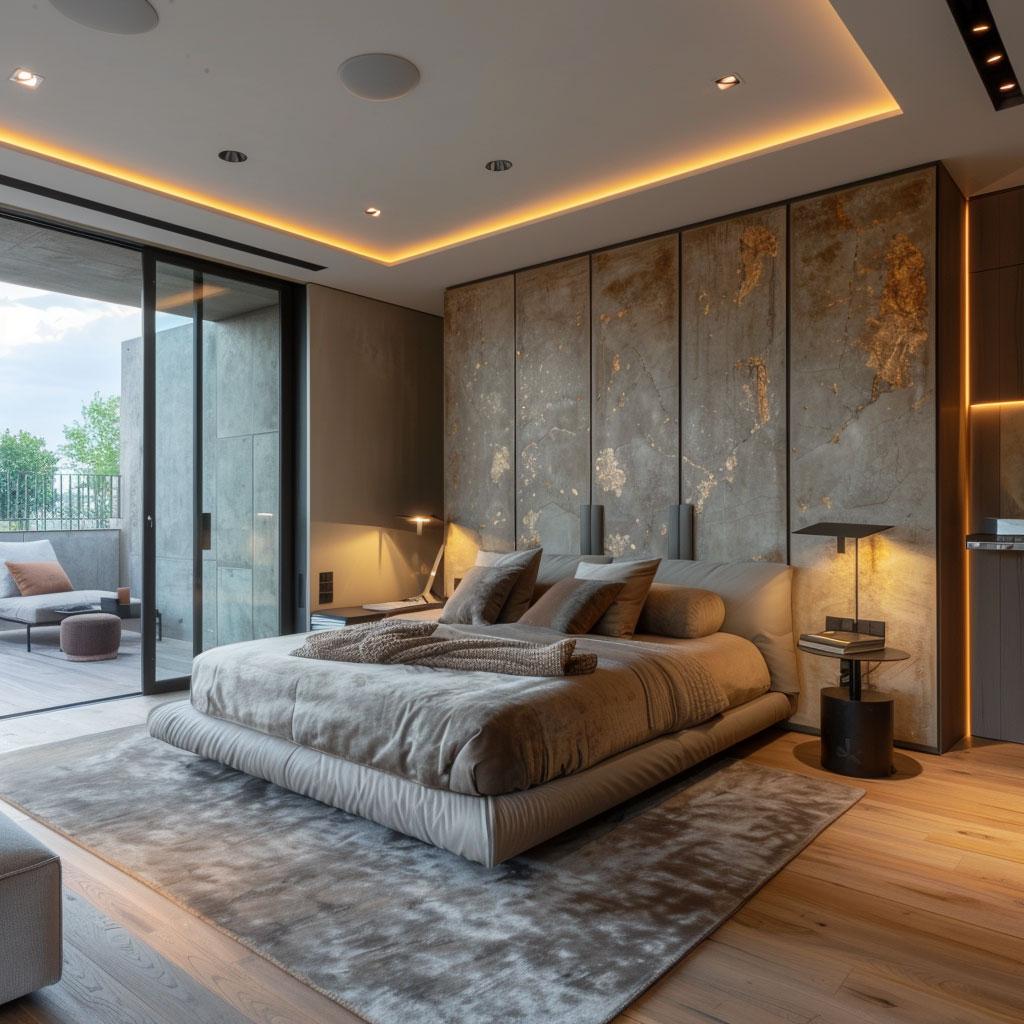How the humble wardrobe evolved from forgotten storage to status symbol—and why most luxury closets fail their owners within months,
Last month, a new client led me into what he proudly called his walk-in wardrobe.
What I encountered was a textbook case of "luxury disappointment syndrome": exquisite bespoke suits crushed against each other on a single rail, hand-made shoes stacked in precarious towers, and custom accessories buried in drawers so overfilled they barely closed.
This £30,000 'luxury' space was functioning with all the sophistication of a university student's first flat.

This experience perfectly illustrates what I call the "Wardrobe Paradox."
As our clothing collections become more valuable and extensive, the thoughtfulness with which we store them often diminishes proportionally. We treat our least valuable possession—storage space—as an afterthought, then wonder why managing our most valuable possessions becomes a daily frustration.
A proper bespoke fitted wardrobe isn't merely about housing your garments—it's about creating a system that works with your habits rather than against them. It's the difference between a wardrobe that looks immaculate on installation day and one that still functions beautifully six months later when real life has taken hold.

The first question I ask clients isn't about aesthetics—it's about square footage. Contrary to popular belief, you don't need an enormous room to create a functional walk-in wardrobe. I've designed exceptional spaces in as little as 2 metres by 2 metres. What matters more is proportion and planning.
For a walk-in wardrobe to function properly, you need:
If you're working with a small walk-in wardrobe, every centimetre must be considered. Remember that a poorly planned large space will always be less functional than a meticulously designed smaller one.

After assessing hundreds of clients' wardrobes, I've observed that most people wear approximately 20% of their clothes 80% of the time. A well-designed wardrobe acknowledges this reality.
Before a single drawing is produced, conduct a thorough wardrobe audit:
This process often reveals surprising insights. One client discovered she owned 87 pairs of shoes but wore only eight regularly. This information transformed her storage priorities from shoe display to more accessible folded storage.

The difference between mediocre and exceptional wardrobes often comes down to technical specifications that most glossy magazines never mention.
Based on industry standards and practical experience:
What distinguishes proper wardrobes from mass-market solutions is customisation of these dimensions to your specific requirements. If you're taller than average, standard hanging heights will leave wasted space. If you collect heritage knitwear, standard drawer depths will be insufficient.
Quality materials aren't merely aesthetic choices—they're functional investments:
One client insisted on saving money by using lower-grade MDF for drawer boxes. Within eight months, the weight of her sweater collection had caused permanent bowing—a costly lesson in false economy.

Poor lighting ruins even the most expensive wardrobes. After years of post-installation visits, I've found lighting complaints to be among the most common.
For optimal functionality:
The technical specifications matter enormously:
Investing in quality lighting designed specifically for wardrobe use typically adds 8-15% to your budget but dramatically improves daily usability.

The finest wardrobes I've designed transcend mere storage—they become spaces clients genuinely enjoy spending time in.
Consider incorporating:
A designated dressing area with appropriate seating; this often-overlooked element transforms the experience from utilitarian to luxurious, with an upholstered ottoman or small bench providing not just comfort during dressing but also a staging area for outfit planning.
Full-height mirrors with considered lighting; proper implementation requires mirrors positioned to show outfits from multiple angles simultaneously, with lighting designed to eliminate shadows and accurately represent how garments will appear in various settings from office lighting to evening venues.
A jewellery station with proper security features; this should include both visible display for frequently worn pieces and concealed, secure storage for valuable items, ideally with specialized compartments that prevent tangling and scratching of delicate pieces.
Seasonal storage that's accessible but not intrusive; the best solutions incorporate vacuum-sealed garment bags in dedicated compartments with cedar elements to deter moths, allowing substantial volume reduction without the degradation risks of compressed storage.
Climate control for valuable collections; for serious collectors, maintaining stable humidity between 45-55% and temperature between 18-21°C protects leather, delicate fabrics, and valuable vintage pieces from the subtle damage that accumulates in unregulated environments.
These aren't frivolous extras but practical enhancements that transform the daily dressing ritual from mundane to pleasurable.

After witnessing countless wardrobe projects, certain mistakes appear with remarkable consistency:
Designing for an idealized version of yourself rather than reality. Those exquisite glass-fronted display cases for folded t-shirts look splendid on day one but become abandoned zones of chaos when real life intervenes.
Those immaculate celebrity wardrobes you've pinned? Most are maintained by staff or meticulously styled for photoshoots. Design for your actual lifestyle, not a magazine fantasy.
Underestimating storage needs is the single most common error. Always plan for 15-20% more capacity than your current collection requires.
Placing infrequently used items in easy-reach zones while daily essentials require a step stool. The spatial hierarchy should reflect usage patterns.

Choosing whom to work with may be your most crucial decision. The best wardrobes result from collaboration between three key parties:
Beware what I call "general cabinetmakers with wardrobe ambitions." Proper wardrobe design is a specialist field requiring technical knowledge that goes far beyond standard joinery.
When evaluating potential partners:
Investing in quality lighting designed specifically for wardrobe use typically adds 8-15% to your budget but dramatically improves daily usability.
Bespoke wardrobes represent significant investments, but context matters. In properties valued above £1.5 million, well-designed storage spaces have become expected features that directly impact resale value.
For true bespoke work, current market rates typically range from £2,000-£3,000 per linear metre, depending on materials, complexity, and finishes. This investment typically returns 70-80% of its value at resale while providing daily utility.

A truly exceptional wardrobe balances aesthetic desires with practical realities. Before finalising any design:
If you can't comfortably access your most-worn items while half-awake on a Monday morning, the design isn't working—regardless of how splendid it looks.
The finest walk-in wardrobes I've created share a common characteristic: they feel inevitable—as though they couldn't possibly have been designed any other way. They reflect their owners' actual lives rather than aspirational fantasies.
Remember, true luxury isn't about impressive dimensions or expensive materials—it's about creating a tailored solution that makes your daily life more pleasant and efficient. And if anyone tries to tell you differently, they're probably trying to sell you unnecessary embellishments rather than thoughtful design.
About the Author: With over twenty years of designing bespoke storage solutions for discerning clients across London and beyond, our author has developed an encyclopedic knowledge of wardrobe design and an allergic reaction to impractical but photogenic solutions. She continues to work with both private clients and developers, helping them create storage spaces that genuinely enhance daily life.
If you need advice on your layout, then take advantage of our free design consultation. Simply make an appointment to visit our award-winning showroom and our expert team will walk you through all your options, ensuring that you end up with the wardrobe of your dreams.

Transparency's kind of our thing.
Here's what real customers have to say about us.
